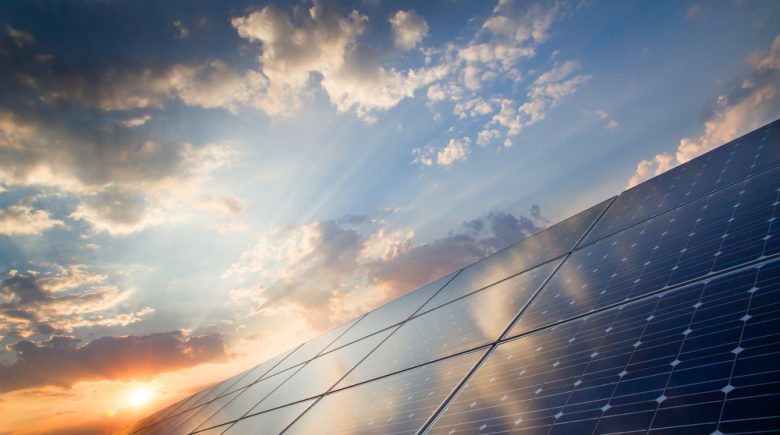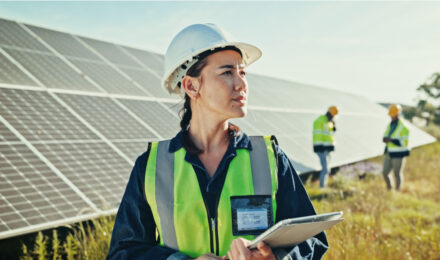As more and more people look for ways to reduce their carbon footprints and do less damage to the environment, solar energy is becoming super popular. Not only does it eliminate pollution, but it’s also pretty affordable. The biggest issue is that many people don’t know much about it or how to even go about getting it started. With that said, here are some of the basics to solar energy!
What is Solar Energy?
While many people have heard of solar energy, some aren’t quite sure what it is. In short, it’s an energy source that is powered by the sun. Once this energy is caught, it’s then turned into electricity that can be used at home or even at work. Depending on what kind of system you have, the solar energy will be turned into electricity in different ways. You can also choose when and how long you want to use your electricity, just like traditional energy sources. Regardless of what you choose, one thing is for certain-solar energy is one of the cleanest forms of energy and can really reduce the impacts on the planet.
Common Solar Energy Terms
When looking at solar energy, there are quite a few terms that are used. These terms can be pretty confusing and hard to understand. With that being the case, we’re going to try and explain some of the most common terms in a way that’s easy to understand.
Alternating Current (AC)
Alternating current is the current that’s used in most power supplies and is always changing directions.
Converter
A converter is an object that changes one type of energy into another type.
Direct Current (DC)
A direct current is the flow of electricity that comes from solar cells. This type of current only goes one way.
Monocrystalline Panels
These panels are a lot newer and more energy efficient. They are made out of rounded bars silicon.
Polycrystalline Panels
These traditional panels are made from a bunch of square panels that are made from melted down silicon. The silicon is called polycrystalline silicon.
Photovoltaic(s) (PV)
This is the method that is used to change solar energy into usable electric.
What are the Benefits and Disadvantages of Solar Energy?
There are quite a few benefits of using solar energy instead of traditional forms of energy. This is one of the reasons why so many people are switching. Some of these benefits are listed below.
- It’s a completely renewable energy source.
- It greatly reduces electric bills.
- It can be used for multiple different things.
- It has low maintenance costs.
- Solar technology is always advancing!
There are also some disadvantages to using solar energy. These things are listed below.
- It has a pretty high cost initially.
- It’s very weather dependent.
- Storing solar energy is quite expensive.
- It uses quite a bit of space.
- While it’s less than other types of energy, it does have some pollution with setup.
Price Points of Solar Energy
When it comes to the price points of solar energy, most people are mainly worried about 3 things. These things are: installation/setup cost, maintenance cost and how much their energy bills will be reduced. Keep in mind, different areas are going to have different prices, so make sure you check your area for exact prices. In terms of installation, most solar power systems are going to range around $10k to $15k. Make sure you look for any grants or programs that will cut down these costs. Maintenance costs usually run between $150-$350 per year. Finally, most people will end up saving around 897 kWh per hour. It might not sound like much, but it can quickly add up!
Is There Anything that Needs Considered?
Since there are a few things that need to happen in order for solar energy to actually work. If these things don’t happen, it won’t work and it will be a big waste. Take a look at the list to see what things should be considered.
- Does your area get enough sunlight?
- Do you have enough space to store the panels?
- Do you have the money for the initial setup?
- Do you have the correct type of roof?
- Are there any regulations in your area about solar energy?
Types of Solar Energy Systems
There are mainly 3 types of solar energy systems. The one you choose is going to depend greatly on your needs and what you’re looking for.
Grid Inter-Tied System
These systems are connected right to your home, as well as the actual electrical grid. This makes it so you can use the solar energy or traditional electric. These also are the lowest cost out of all the systems.
Grid Inter-Tied System with Battery Backup
These systems are just like the grid inter-tied systems, except it adds a backup battery. This means you can still have electricity if the power goes out or you don’t have enough solar energy. The main issue with these is that having to use batteries makes everything much less efficient.
Off-Grid Systems
Finally, you have the off-grid systems. These are completely disconnected from the energy grid and batteries are an essential part of the system. Most of the time, a generator will be added. Just like the previous system, this makes things less efficient.
How to Choose a System and Switch
It’s extremely easy to choose a system and make the switch. When looking at the different systems and companies, there are a few things you want to look at. These things are listed below.
- Recommendations from others
- Length of warranty
- Price
- Size
- Type of panels
The best thing to do is look at multiple companies and get multiple quotes!
As more and more people look for ways to reduce their carbon footprints and do less damage to the environment, solar energy is becoming super popular. Not only does it eliminate pollution, but it’s also pretty affordable. The biggest issue is that many people don’t know much about it or how to even go about getting it started. With that said, here are some of the basics to solar energy!
What is Solar Energy?
While many people have heard of solar energy, some aren’t quite sure what it is. In short, it’s an energy source that is powered by the sun. Once this energy is caught, it’s then turned into electricity that can be used at home or even at work. Depending on what kind of system you have, the solar energy will be turned into electricity in different ways. You can also choose when and how long you want to use your electricity, just like traditional energy sources. Regardless of what you choose, one thing is for certain-solar energy is one of the cleanest forms of energy and can really reduce the impacts on the planet.
Common Solar Energy Terms
When looking at solar energy, there are quite a few terms that are used. These terms can be pretty confusing and hard to understand. With that being the case, we’re going to try and explain some of the most common terms in a way that’s easy to understand.
Alternating Current (AC)
Alternating current is the current that’s used in most power supplies and is always changing directions.
Converter
A converter is an object that changes one type of energy into another type.
Direct Current (DC)
A direct current is the flow of electricity that comes from solar cells. This type of current only goes one way.
Monocrystalline Panels
These panels are a lot newer and more energy efficient. They are made out of rounded bars silicon.
Polycrystalline Panels
These traditional panels are made from a bunch of square panels that are made from melted down silicon. The silicon is called polycrystalline silicon.
Photovoltaic(s) (PV)
This is the method that is used to change solar energy into usable electric.
What are the Benefits and Disadvantages of Solar Energy?
There are quite a few benefits of using solar energy instead of traditional forms of energy. This is one of the reasons why so many people are switching. Some of these benefits are listed below.
- It’s a completely renewable energy source.
- It greatly reduces electric bills.
- It can be used for multiple different things.
- It has low maintenance costs.
- Solar technology is always advancing!
There are also some disadvantages to using solar energy. These things are listed below.
- It has a pretty high cost initially.
- It’s very weather dependent.
- Storing solar energy is quite expensive.
- It uses quite a bit of space.
- While it’s less than other types of energy, it does have some pollution with setup.
Price Points of Solar Energy
When it comes to the price points of solar energy, most people are mainly worried about 3 things. These things are: installation/setup cost, maintenance cost and how much their energy bills will be reduced. Keep in mind, different areas are going to have different prices, so make sure you check your area for exact prices. In terms of installation, most solar power systems are going to range around $10k to $15k. Make sure you look for any grants or programs that will cut down these costs. Maintenance costs usually run between $150-$350 per year. Finally, most people will end up saving around 897 kWh per hour. It might not sound like much, but it can quickly add up!
Is There Anything that Needs Considered?
Since there are a few things that need to happen in order for solar energy to actually work. If these things don’t happen, it won’t work and it will be a big waste. Take a look at the list to see what things should be considered.
- Does your area get enough sunlight?
- Do you have enough space to store the panels?
- Do you have the money for the initial setup?
- Do you have the correct type of roof?
- Are there any regulations in your area about solar energy?
Types of Solar Energy Systems
There are mainly 3 types of solar energy systems. The one you choose is going to depend greatly on your needs and what you’re looking for.
Grid Inter-Tied System
These systems are connected right to your home, as well as the actual electrical grid. This makes it so you can use the solar energy or traditional electric. These also are the lowest cost out of all the systems.
Grid Inter-Tied System with Battery Backup
These systems are just like the grid inter-tied systems, except it adds a backup battery. This means you can still have electricity if the power goes out or you don’t have enough solar energy. The main issue with these is that having to use batteries makes everything much less efficient.
Off-Grid Systems
Finally, you have the off-grid systems. These are completely disconnected from the energy grid and batteries are an essential part of the system. Most of the time, a generator will be added. Just like the previous system, this makes things less efficient.
How to Choose a System and Switch
It’s extremely easy to choose a system and make the switch. When looking at the different systems and companies, there are a few things you want to look at. These things are listed below.
- Recommendations from others
- Length of warranty
- Price
- Size
- Type of panels
The best thing to do is look at multiple companies and get multiple quotes!



